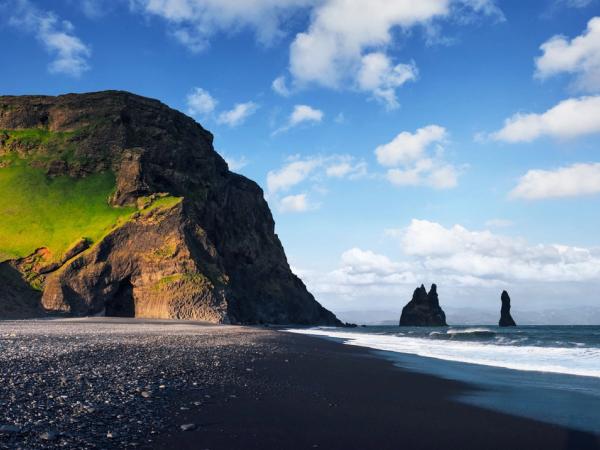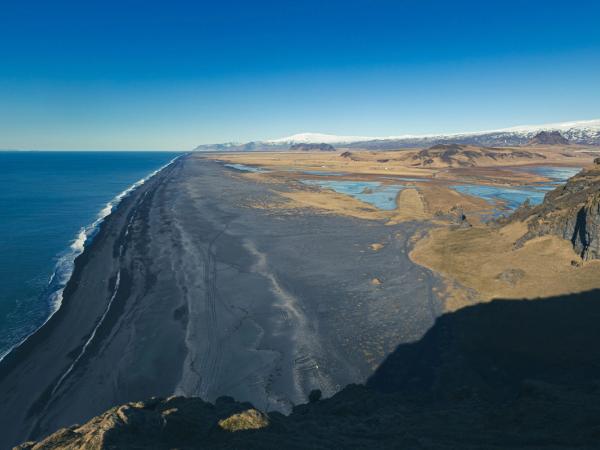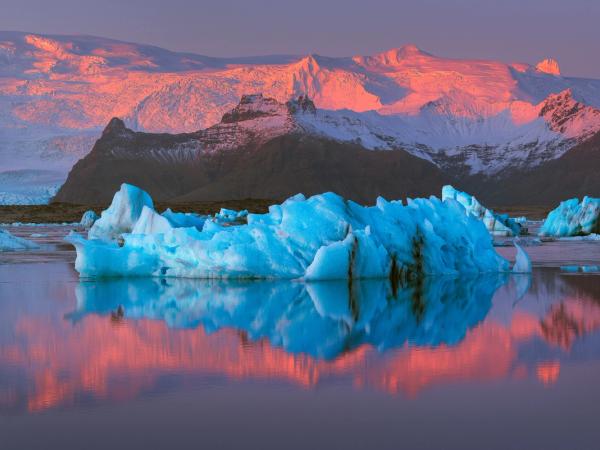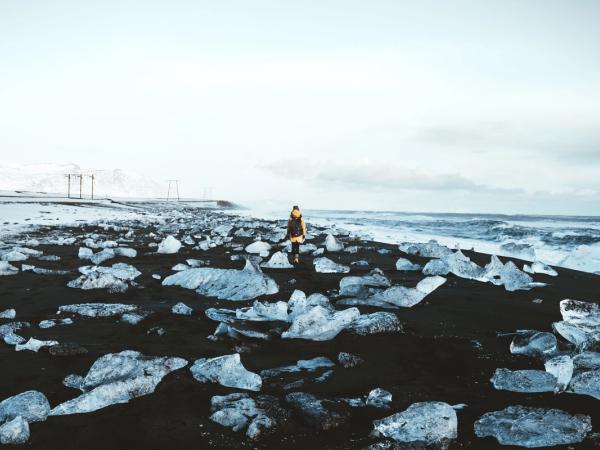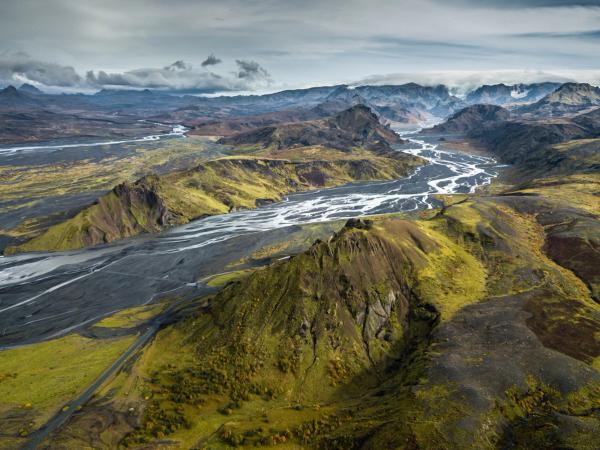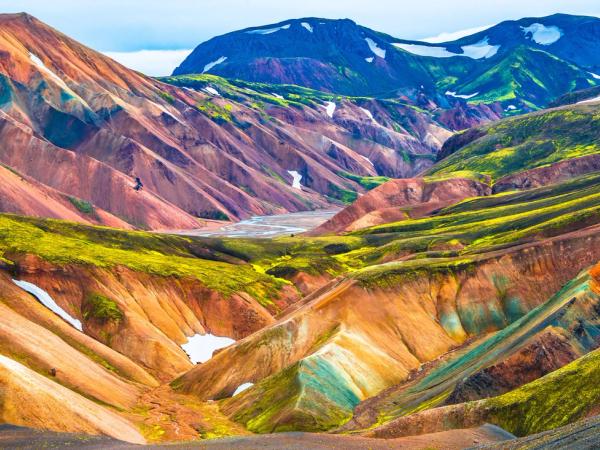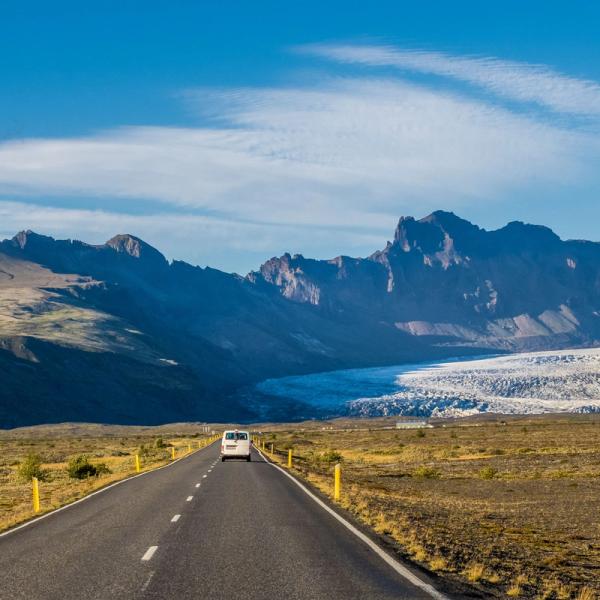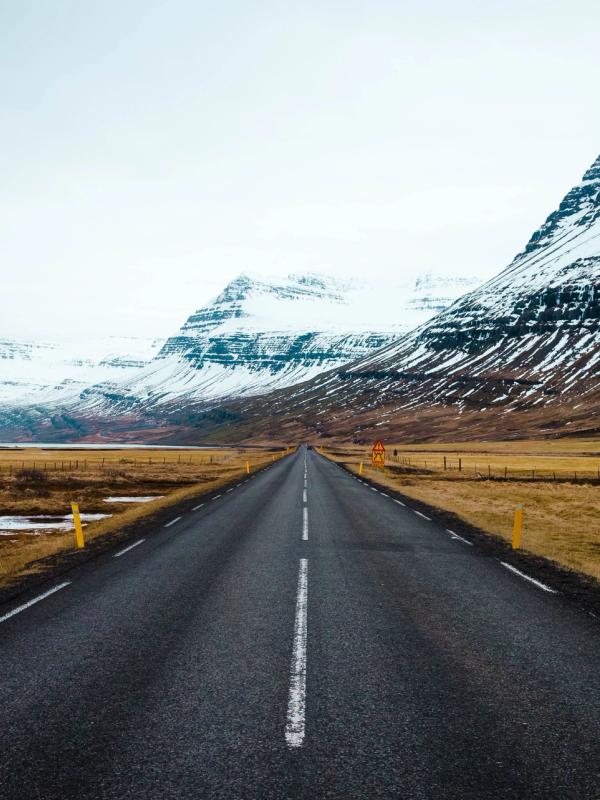
Driving Around Iceland: A Guide to the Famous Ring Road
Coming to Iceland is one of the best traveling experiences nowadays. This country is full of amazing places for you to discover, including impressive volcanoes, astonishing glaciers, lava formations, waterfalls, and much more.
If you want to discover as many places as possible, the best choice is to use Iceland’s main road: its famous Ring Road.
The Ring Road, or Route 1, is a circular road that goes around the whole country, not far from the coast. The terrain in Iceland is quite rugged and complicated, and this road goes along lower areas. Then, there are many secondary roads that link the Ring Road to many other places.
So, if you drive in Iceland, this road will be the most used. This guide will take you on it, making stops in all the interesting places that this toad passes by—and there are a lot of them!
Key Takeaways
- The Ring Road is 1,332 kilometers (828 miles) long.
- It takes approximately 6 to 7 days to complete the whole Ring Road, making stops to enjoy the attractions. It would take about 17 hours to complete it without stops.
- In winter, due to snow and short daylight hours, the number of days needed may be higher.
- The road is entirely paved and in good condition.
Navigating the Ring Road
As we explained before, Iceland’s Ring Road is the ultimate route for exploring the country’s diverse landscapes and vibrant culture. This iconic highway offers travelers a chance to discover not only the country’s natural beauty but also many of its most important and interesting cities and towns.
Its construction began in the early 1970s and was completed in 1974. Since then, many improvement works have been done to adapt the road to contemporary life. Route 1, its official name—which in the native tongue is called Þjóðvegur 1 or Hringvegur—is a crucial piece of infrastructure for both locals and tourists.
The goal was to connect the entire country, as some areas and regions had been isolated for decades. Of course, it doesn’t cover every corner of the islands, but many other roads connect to it. The road is primarily two lanes, with some sections featuring narrow bridges and challenging curves. It's a well-maintained route, but travelers should be prepared for varying weather conditions, especially in winter.
One of the most fascinating aspects of the Ring Road is that it goes through many regions, showing Iceland's geological diversity. Along this route, travelers can see many different landscapes, from green pastures and volcanic deserts to icy glaciers and rugged coastlines.
This makes it the perfect vessel for tourists who want to explore Iceland's natural wonders in a relatively short amount of time.
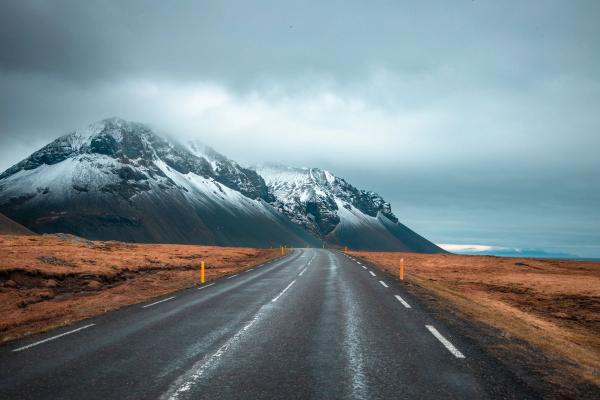
Main Attractions on the Ring Road
The drive along the Ring Road is a beautiful journey. It is like going to an open-air museum, in which you decide which pieces of art you are going to see, choosing your own pace. Route 1 passes several of Iceland's most amazing attractions. Let’s stop at the best of them.
Seljalandsfoss Waterfall
If you start the journey from Reykjavik and start heading east, one of the best things you’ll meet along the way is Seljalandsfoss Waterfall. This 60 meters (196 feet) tall cascade is one of the most famous waterfalls in Iceland. One of its most attractive features is that there’s a path that goes behind the falling water. From there, you’ll have a perspective that is unique and breathtaking.
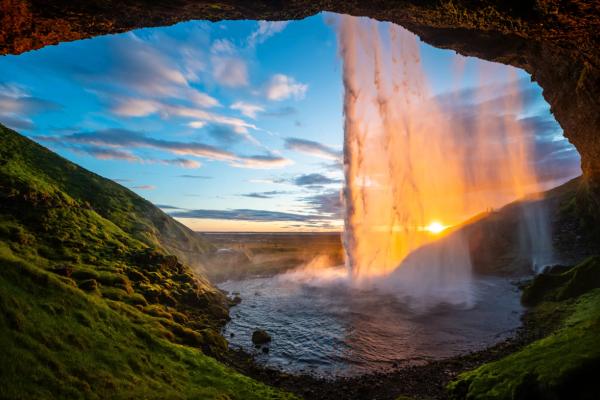
Skógafoss
The next stop in our journey is another iconic waterfall: Skógafoss. This cascade has a similar size to Seljalandsfoss, but the setting is completely different. It’s known for its characteristic mist. When the sun is out, it creates a beautiful rainbow effect. Visitors can climb a staircase to an observation platform above the falls for a different vantage point. There’s also a touch of Icelandic legend here. Story tells of a Viking settler named Þrasi Þórólfsson who hid a treasure chest behind the waterfall.
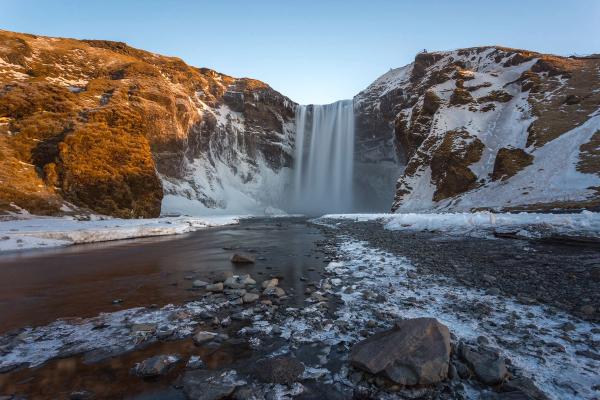
Vik, Reynisfjara Beach, and Dyrhólaey
The beaches in Iceland are famous all over the world for their striking beauty. Perhaps it’s not your go-to place for sunbathing, but they are worth a visit. Near the charming village of Vík, we can find Reynisfjara Beach, famous for its black sand, basalt columns, and dramatic sea stacks. The beach is also known for its powerful waves, so visitors should exercise caution when walking along the shore. The nearby Dyrhólaey promontory offers panoramic views of the coastline and is a great spot for birdwatching.
Jökulsárlón Glacier Lagoon & Diamond Beach
Still in the south of the country, but a bit further east, we’ll get to Jökulsárlón Glacier Lagoon. It’s a stunning glacial lagoon with big pieces of ice that have separated from the glacier and are floating on the water before drifting off to the sea. If you head to the nearby Diamond Beach, you will see the blue little icebergs in contrast with the black sand.
Lake Mývatn
We have now arrived in North Iceland, where many amazing places are waiting for us. One of them is Lake Mývatn, known for its geothermal activity, unique lava formations, and rich birdlife. Here you can relax by taking a geothermal bath in the middle of an astonishing landscape. There are also several trekking paths in the area that will take you to the surrounding lava fields.
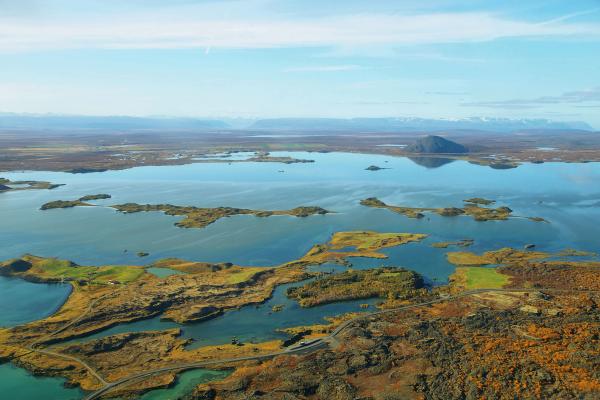
Detifoss
Not far from there is Dettifoss, Iceland’s most powerful waterfall and the second in Europe. Also known as “The Beast”, has a fall of 44 meters (144 feet) and a width of 100 meters (330 feet). Visitors often feel humbled by the sheer power of the waterfall. There are viewing platforms on both sides of the waterfall.
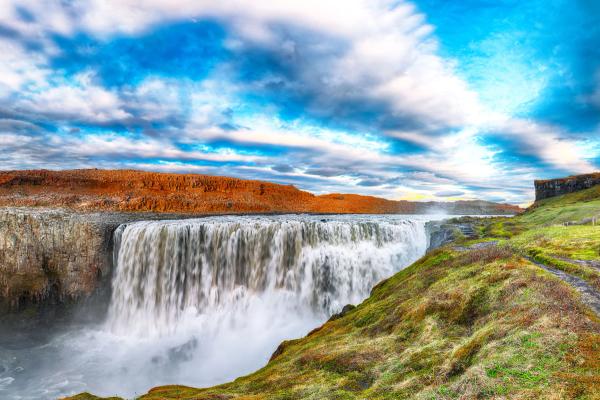
Godafoss
Then you can visit Godafoss, one of the most famous and historically meaningful waterfalls in Iceland. The name translates as ‘Waterfall of the Gods’. The place is not only stunning in natural beauty but also has important historical significance. It was here that Iceland converted to Christianity in the year 1000.
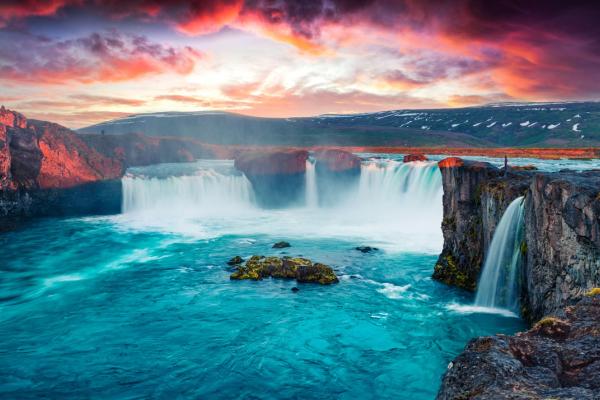
Attractions Near the Ring Road
So far, we have listed places that are just off the Ring Road. However, there are many more. And if you take a little detour, you can improve even more the experience of driving on the amazing Route 1.
The Golden Circle
The famous Golden Circle starts from the Ring Road itself. This popular tourist route includes three major attractions: Þingvellir National Park, the Geysir geothermal area, and Gullfoss, a stunning two-tiered waterfall. These sites are all within a day's drive from Reykjavik and offer a great introduction to Iceland's natural beauty.
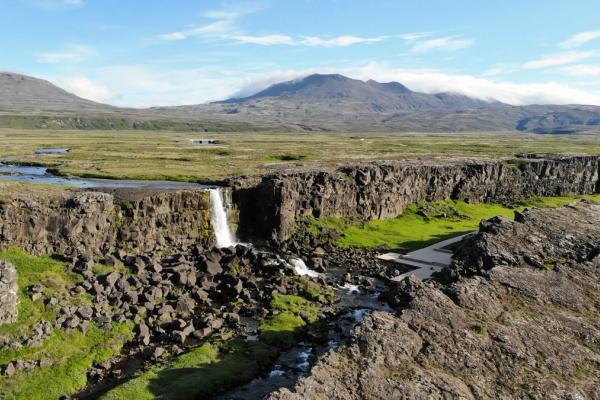
The Westman Islands
In front of the south coast is Vestmannaeyjar, also known as the Westman Islands. This archipelago is accessible by ferry, and is a famous spot for birdwatching. Here you can find the charming puffin. The king of these islands is the Eldfell Volcano. Its eruption in 1973 reshaped the main island significantly. Visitors can hike up the volcano to witness the new lava fields and enjoy panoramic views of the island and the surrounding ocean.
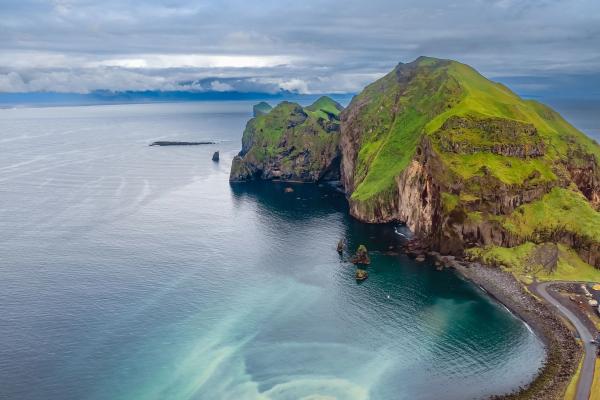
Þórsmörk & Landmannalaugar
Another great stop to make if you are navigating the Ring Road is Þórsmörk. This picturesque valley, nestled between three glaciers, is a paradise for hikers. This valley is known for its lush vegetation, glacial rivers, and stunning mountain views.
Not far from it is Landmannalaugar. In fact, you can take the Laugavegur trail, which connects both sites. Landmannalaugar is astonishing, with its colorful rhyolite mountains and geothermal hot springs. There are many trails to discover every corner of this area.
The Diamond Circle
As happens with the Golden Circle, Route 1 is also part of another great route that connects several places: The Diamond Circle. This looping scenic route is in the north of the country. It goes by five main attractions: Goðafoss Waterfall, Lake Mývatn, Dettifoss Waterfall, Ásbyrgi Canyon, and the charming town of Húsavík.
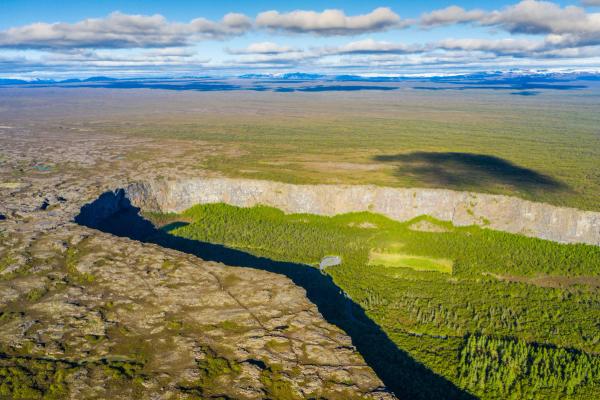
Snaefellsnes Peninsula
In western Iceland, you can visit the Snaefellsnes Peninsula, home of Snaefellsjökull National Park, one of the three national parks in Iceland.
In this region, you can visit Kirkjufell, the most photographed mountain in the country, or the Snaefellsjökull glacier, an impressive ice cap that sits atop a volcano. The peninsula is also home to several hiking trails and unique geological features.
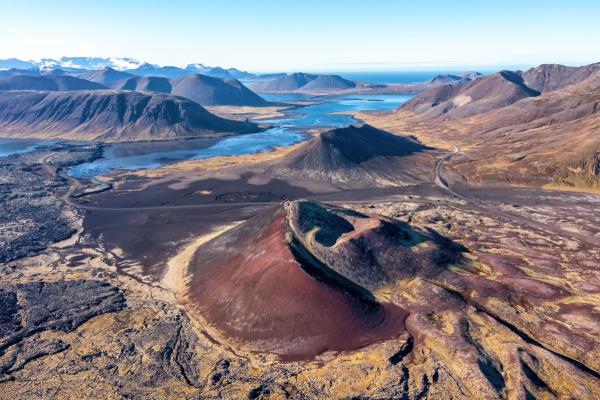
Which Cities Does the Ring Road Pass By?
The Ring Road passes through several key towns and cities, offering many opportunities to explore Icelandic culture and history. We will start in the country’s capital, Reykjavik, and head north in a clockwise direction.
Reykjavik
Reykjavik is a city full of life and culture, with numerous museums, galleries, and historical sites. It’s the core of Iceland’s life, and one-third of the country’s population lives here. This city is the northernmost capital of any sovereign state in the world, and offers a combination of natural beauty, rich culture, and modern lifestyle. Highlights include the iconic Hallgrimskirkja church, or ng Laugavegur, the main commercial street in the city.
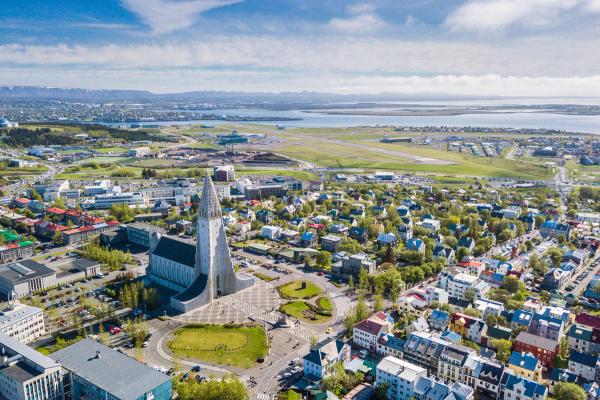
Borgarnes
Continuing north from Reykjavik, travelers will reach Borgarnes, a small town with a rich history dating back to the first settlers on the island. Here you can learn about Iceland's early history and the sagas in the Settlement Center. The town's scenic location also offers beautiful views of the surrounding fjords and mountains.
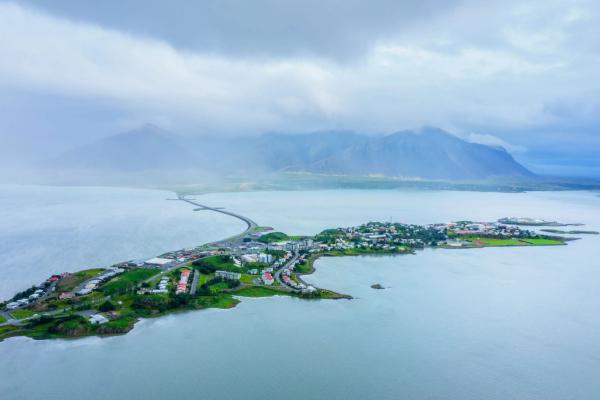
Akureyri
Further north on the road is Akureyri, Iceland's second-largest urban area. Unofficially nicknamed “The Capital of North Iceland”, it’s a great mix of outdoor activities and cultural experiences. It’s close to the Diamond Circle and is an important port and fishing center. If you are a nature enthusiast, the Akureyri Botanical Gardens showcase a diverse range of Arctic and temperate plants.
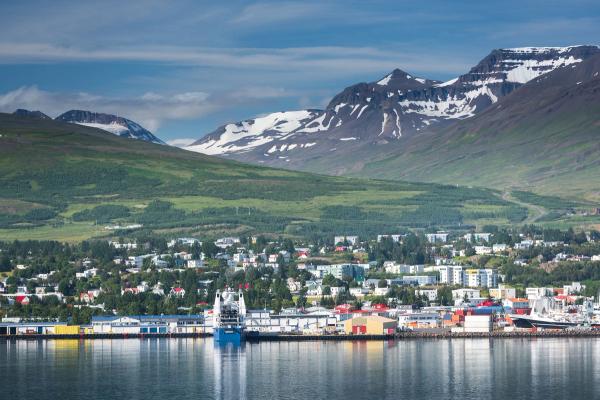
Egilsstaðir
If you want to explore the east fjords, a great idea is to stay at Egilsstaðir. This area of Iceland is less known and visited than others, but not short of beauty. The fjords here are known for their dramatic landscapes and charming fishing villages.

Höfn
In the southeast, you will come across Höfn, a nice little town that offers stunning views of the Vatnajökull glacier. Höfn is renowned for its lobster dishes and fresh seafood while taking in the breathtaking glacier views. The town is also close to Jökulsárlón glacier lagoon.
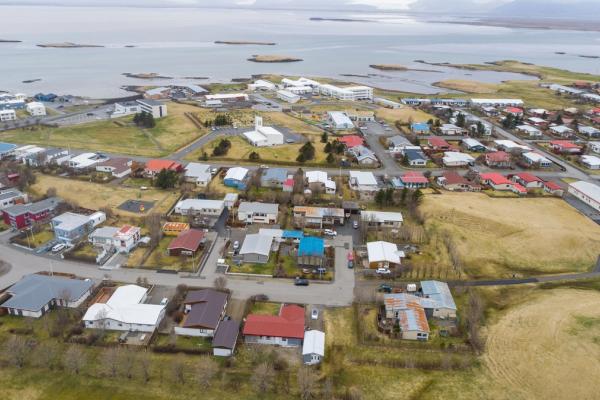
Vík
The journey continues to Vík, a small village known for its black sand beaches –such as Reynisfjara Beach- and striking basalt columns. Vík is the southernmost village in Iceland and is often used as a base for exploring the South Coast's many attractions.
Itinerary
As you just saw, the Ring Road is full of amazing places to visit. I think one of the hardest things to do is to fit all those places into an itinerary that actually makes sense. Here's one for 7 days that you can use, and I've found to be great.
Day 1: Reykjavik to Vík (190 km)
Head southeast on Route 1. You'll see some great sights:
- Seljalandsfoss: Walk behind this tall waterfall for cool views
- Skógafoss: Climb the stairs next to this strong waterfall for wide views
- Reynisfjara: Check out this black sand beach with its stone columns and stacks
Try to reach Vík by late afternoon for dinner and rest.

Day 2: Vík to Höfn (270 km)
Today, you'll drive through some of Iceland's best landscapes:
- Fjaðrárgljúfur Canyon: A quick side trip shows you a deep, pretty canyon
- Skaftafell: Take a short walk to Svartifoss waterfall with black stone columns
- Jökulsárlón Glacier Lagoon: See blue icebergs float toward the sea
- Diamond Beach: Find ice chunks on black sand
Stay in Höfn, known for great seafood.
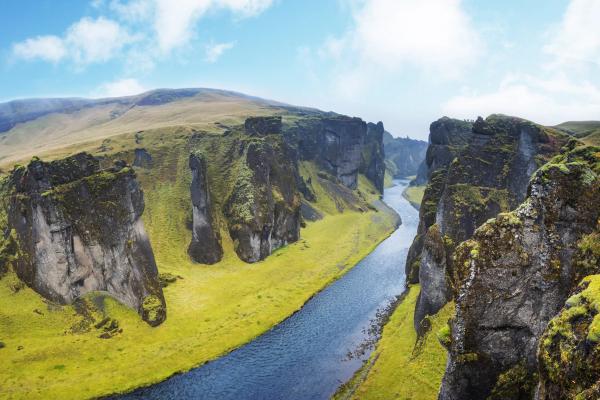
Day 3: Höfn to Egilsstaðir (185 km)
The East Fjords have winding roads along the coast and small fishing towns:
- Djúpivogur: A nice stop with art pieces and harbor views
- Seyðisfjörður: Visit this colorful town with its rainbow street and blue church
- Lagarfljót: Drive by this lake, said to have its own monster
Spend the night in Egilsstaðir, the main town in the East.
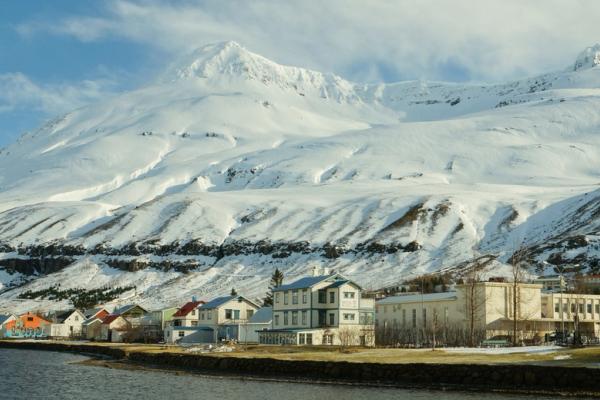
Day 4: Egilsstaðir to Lake Mývatn (175 km)
Today, you'll see Northeast Iceland's volcanic wonders:
- Dettifoss: See Europe's strongest waterfall
- Ásbyrgi: Walk in this horseshoe-shaped canyon full of old stories
- Hverir: Walk among bubbling mud pots and steam vents
- Lake Mývatn: See crater-like spots and lava shapes
Stay near Lake Mývatn to fully enjoy this weird area.

Day 5: Lake Mývatn to Akureyri (80 km)
A shorter driving day lets you see more:
- Goðafoss: Visit the "Waterfall of the Gods" with its old tales
- Húsavík: Take a side trip for whale watching (3-hour tours)
- Akureyri: See Iceland's second city with its gardens and church
Spend the night in Akureyri, trying local food and shops.
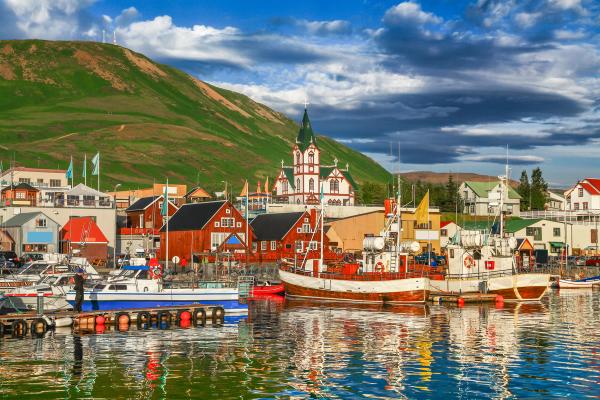
Day 6: Akureyri to Borgarnes (315 km)
The longest driving day takes you through northwest Iceland:
- Glaumbær: Visit old turf houses to see how Icelanders used to live
- Hvítserkur: Take a short side trip to see this odd sea rock
- Kolugljúfur Canyon: Stop at this hidden spot with pretty waterfalls
Stay in Borgarnes for your last night on the road.
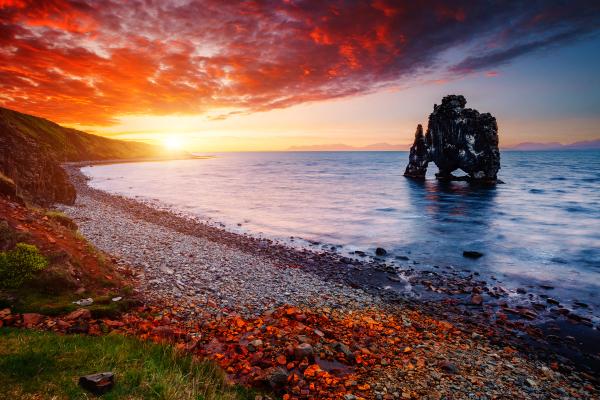
Day 7: Borgarnes to Reykjavik via Golden Circle (150 km+)
End your trip with Iceland's famous Golden Circle:
- Þingvellir National Park: Walk between two sides of the earth
- Geysir: Watch water shoot up every 5-10 minutes
- Gullfoss: See this big two-step waterfall
Return to Reykjavik by evening to finish your trip.
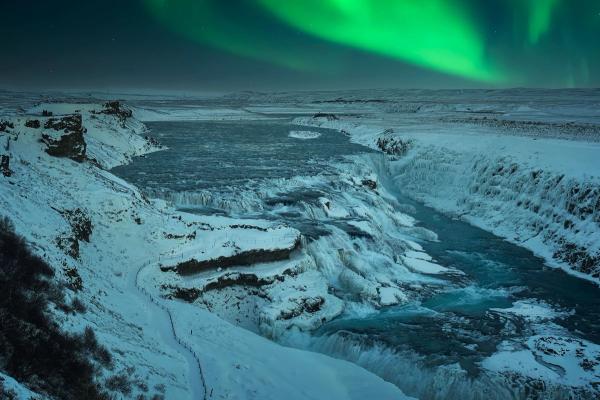
The Ring Road in Every Season
Driving on the Ring Road is pretty straightforward and easy. The road conditions are good, it's well maintained, and it's easy to follow directions. It’s always a good idea to follow some considerations, though, as the weather can affect the driving experience in this country.
Spring (April and May)
One of the perks of going on the Ring Road in spring is seeing the landscapes at their best. The blooming nature creates an amazing palette of colors, and the waterfalls are particularly impressive during spring, as the melting snow and ice increase their flow.
It’s a rainy season, but there are little chances of snow, especially as the season goes by.
Summer (June to August)
This season provides the best driving conditions. The temperatures are mild, and it rains considerably less than the rest of the year. Also, the extended daylight hours are perfect, so you don’t have to drive at night, which some people avoid at all costs. It’s a great time for outdoor activities, too.
Summer is peak season, which means that Route 1 will be busier. It’s advisable to book accommodations and tours well in advance.
Autumn (September and October)
The temperatures gradually decrease, as well as the daylight hours. But the vegetation looks especially astonishing during this season. In autumn, the phenomenon of the Northern Lights begins to happen, as the darkening skies offer optimal viewing conditions.
During autumn, most of Iceland's natural attractions remain accessible, though some Highland roads may close as early as October. The weather can be unpredictable, with occasional rain and the first signs of snow in higher elevations.
Winter (November to March)
Winter transforms Iceland into a snowy wonderland, perfect for experiencing the Northern Lights and winter sports. However, driving conditions can be challenging due to snow and ice, and some parts of the Ring Road may be temporarily closed during severe weather. It's essential to check weather forecasts and road conditions regularly and to be prepared for sudden changes.
Driving Tips for the Ring Road
Driving the Ring Road requires preparation and caution, especially for those unfamiliar with Iceland's unique road conditions. As we said, the road itself is well maintained, but be careful while going on secondary roads, especially the infamous F-roads. Here are some essential tips to ensure a safe and enjoyable journey:
- Choose your vehicle. The best way to explore Iceland is to rent a car. While a standard two-wheel-drive vehicle is sufficient for summer travel, a four-wheel-drive is recommended for winter or if you are going to an area with rugged roads. A navigator is a great added help.
- Weather monitoring. Icelandic weather is notoriously unpredictable and is constantly changing. Before setting out each day, check the weather forecast and road conditions to avoid unpleasant surprises. Be prepared to adjust your plans if severe weather is expected.
- Single-lane bridges. Many sections of the Ring Road feature single-lane bridges. The rule is that the vehicle closest to the bridge has the right of way, so approach these bridges with caution and be prepared to give way if necessary. These bridges can be particularly challenging in winter when visibility is reduced, and roads are slippery.
- Fuel stops. Fuel stations can be sparse in remote areas, so it's essential to fill up whenever you have the opportunity. Running out of fuel in the middle of nowhere can be both inconvenient and dangerous.
- Safety gear. Make sure that your car has the appropriate tires for different climatic events. In winter, it must be equipped with snow tires.
- Driving etiquette. Icelanders are known for their patience and courtesy on the road. Follow local driving customs, obey speed limits, and always use turn signals. If you need to stop for photos or a break, pull off the road to a safe parking area to avoid obstructing traffic.
- Road hazards. Be aware of potential road hazards such as livestock, potholes, and gravel roads. Some sections of the Ring Road are still gravel, and driving on these surfaces requires extra caution.
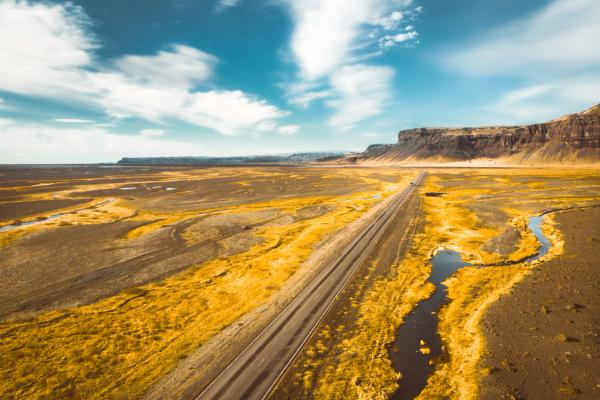
Planning Your Ring Road Accommodation
Finding good places to stay along Iceland's Ring Road helps you enjoy your trip more. You'll want a comfy bed after long days of driving.
Since the Ring Road goes around the whole country, it makes sense to stay each night in a different region to avoid long drives and missing out on must-see spots.
South Region (Vík, Höfn)
The South Coast has many famous sights, so it's a popular place to stay overnight.
Vík Cottages sits near Reynisfjara Beach. These cozy units have kitchens and heated floors—nice after walking on black sand beaches in wet weather. Its location is hard to beat, next to stunning mountains and overlooking the whole town from a beautiful green plain. Prices run $250-$300 per night for two people. Book early for summer.
If you want something cheaper, you can stay at the campsite in Vik, which is just 1 km from the city center and costs only $16. It has hot and cold water, showers, Wifi, and dining facilities. The downside is that the campsite is only open from the 13th of May to the 30th of November.
East Region (Egilsstaðir, Seyðisfjörður)
The East Fjords have fewer tourists, so it's an excellent stop for relaxing.
Hérað Icelandair Hotel in Egilsstaðir is a great option. It's in a good spot for seeing the nearby fjords and for outdoor activities like hiking, and it has a top-notch restaurant where you can try local food like reindeer. Prices go from $215 in the shoulder season to almost double in peak season.
Seyðisfjörður Campsite is in a pretty village, near the blue church. For $19 per person, you get a kitchen, dining tables, showers, and Wi-Fi, in the town center.
North Region (Akureyri, Lake Mývatn)
The North has city life and odd volcanic sights.
The Akureyri - Berjaya Iceland gives you the comfort of staying in the city for $220-$400 per night (per room). The location is perfect for those looking to enjoy nature and even ski.
Vogahraun Campsite near Lake Mývatn puts you among volcanic landscapes for $15-$25 per person. The Mývatn Nature Baths nearby are less crowded than the Blue Lagoon, but are equally relaxing.
West Region (Borgarnes, Snæfellsnes)
The West has easy-to-reach spots with great views.
Fosshotel Reykholt sits in a pretty valley near Borgarnes. You can see nice hills, and it's close to old sites like Snorrastofa. Rooms go from $185 to $400 per night with free Wi-Fi, depending on the season. After exploring, you can soak in the hot tubs. It's just 10 minutes from Route 1 and 20 minutes from cool spots like Deildartunguhver hot spring and Hraunfossar waterfall. Book 3-6 months early for summer.
Borgarnes Campsite has fjord views for $15 per person. It's right off Route 1, so it's super convenient.
Booking Tips
For summer trips (June-August), book places 3-6 months early, especially in the South. Winter travelers can often find deals at the last minute, but check if roads are open and if places are still running.
Look at prices on different booking sites. Hotels often have deals on their own websites. For campsites, ask about camping cards, which can save money.
Budgeting for Your Ring Road Adventure
Iceland is very expensive, but there are some things you can do to keep costs down.
Transportation
Car rental is your biggest travel cost:
- Basic 2WD car: $50-$100 daily (fine for summer Ring Road)
- 4WD/SUV: $100-$200 daily (needed for winter or dirt roads)
- Campervan: $150-$300 daily (gives you a place to sleep, too)
Fuel costs add up in Iceland:
- Gas costs about $2.45 per liter ($9.40 per gallon)
- The full 1,332 km Ring Road uses $200-$250 in fuel for most cars
- Add 20% more for side trips
Ways to save:
- Book cars early
- Skip extra insurance if your credit card covers it
- Choose a stick instead of an automatic for lower rates
- Fill up in bigger towns where gas costs less
Accommodation
Places to stay vary in price, but they're generally expensive
- Hostels: $30-$50 per person in shared rooms
- Guesthouses/B&Bs: $100-$200 per night
- Hotels: $150-$300 per night
- Campgrounds: $10-$25 per person
- Farm stays: $80-$150 per night
Ways to save:
- Camp in summer
- Book rooms with kitchens
- Choose shared bathroom options
- Find places with free breakfast
- Use the camping card
Food
Food prices can shock visitors:
- Restaurant main dish: $25-$40
- Soup and bread lunch: $15-$25
- Fast food meal: $15-$20
- Coffee and pastry: $8-$12
- Six-pack of local beer from store: $15-$20
Ways to save:
- Shop at cheap supermarkets like Bónus or Krónan
- Bring a water bottle (tap water is clean and free)
- Cook your own food as much as possible
- Try gas station hot dogs ($5) for cheap, classic Icelandic fast food
- Stay where breakfast is included
Activities
Many of Iceland's best things to do are free, but others are pretty expensive. Just prioritize.
- Most waterfalls, beaches, and hiking trails: Free
- Natural hot springs: Usually free
- Museums and paid sites: $10-$25
- Guided tours: $50-$200
- Special trips (whale watching, glacier hikes): $100-$300
Ways to save:
- Focus on free natural sights
- Use free hiking apps instead of guided walks (not for glacier hikes or remote places)
- Look for combo tickets for paid sites
- Visit town swimming pools ($5-$10) instead of fancy hot springs
Total Budget Estimates
For a 7-day Ring Road trip:
- Budget traveler (camping, cooking): $1,200-$1,800 per person
- Mid-range traveler (guesthouses, some restaurants): $2,000-$3,000 per person
- Luxury traveler (nice hotels, daily activities): $3,500-$5,000+ per person
What to Pack: Essential Gear for Iceland
The weather here is completely unpredictable, so pack for all seasons in one day, no matter when you visit Iceland.
Year-Round Essentials
These items are must-haves:
- Waterproof hiking boots: Most important item for seeing waterfalls, beaches, and trails
- Waterproof jacket and pants: For rain and waterfall spray
- Layers: Base layer, mid-layer fleece, and outer shell to adjust to changing weather
- Hat and gloves: Even summer nights get cold
- Swimsuit: For hot springs, pools, and spas
- Quick-dry towel: For hot spring visits
- Reusable water bottle: Iceland's tap water is clean and tasty
- Power bank: For long drives
- European power adapter: Iceland uses European plugs (type F)
- Sunglasses: For low sun while driving
Summer Packing (June-August)
When the sun barely sets:
- Sleep mask: To help you rest on bright nights
- Light layers: Both long and short-sleeved shirts
- Sun protection: Sunscreen works even when it's cool out
- Bug spray: For midges around Lake Mývatn
- Hiking pants: Quick-dry ones work best
- Day backpack: For carrying layers and snacks
Winter Packing (November-March)
For cold Icelandic winters:
- Warm base layers: Wool or synthetic
- Winter boots: Regular hiking boots may not be warm enough
- Thick gloves: Waterproof ones are best
- Headlamp or flashlight: For short daylight hours
- Hand/foot warmers: For watching the Northern Lights
- Ice grips for shoes: For slippery paths
- Insulated water bottle: So water doesn't freeze
Photography Gear
For taking great Iceland photos:
- Wide lens: For big landscapes
- Filters: To cut glare from water/ice
- Extra batteries: Cold drains them fast
- Waterproof camera bag: To keep gear dry
- Tripod: For Northern Lights or waterfall shots
Packing tips:
- Use packing cubes to save space
- Wear your bulky items on the plane
- Pack some soap for washing clothes
- Rent gear like ice spikes rather than buying
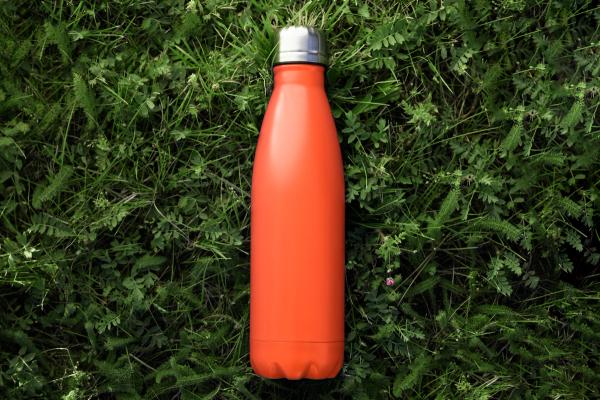
Conclusion
Driving the Ring Road is the best way to cover most of Iceland. It will take you around the island with easy access to some of the best attractions in the country. Whether you’re captivated by cascading waterfalls, enchanted by black sand beaches, or mesmerized by glacial lagoons, this route promises an unforgettable journey.


